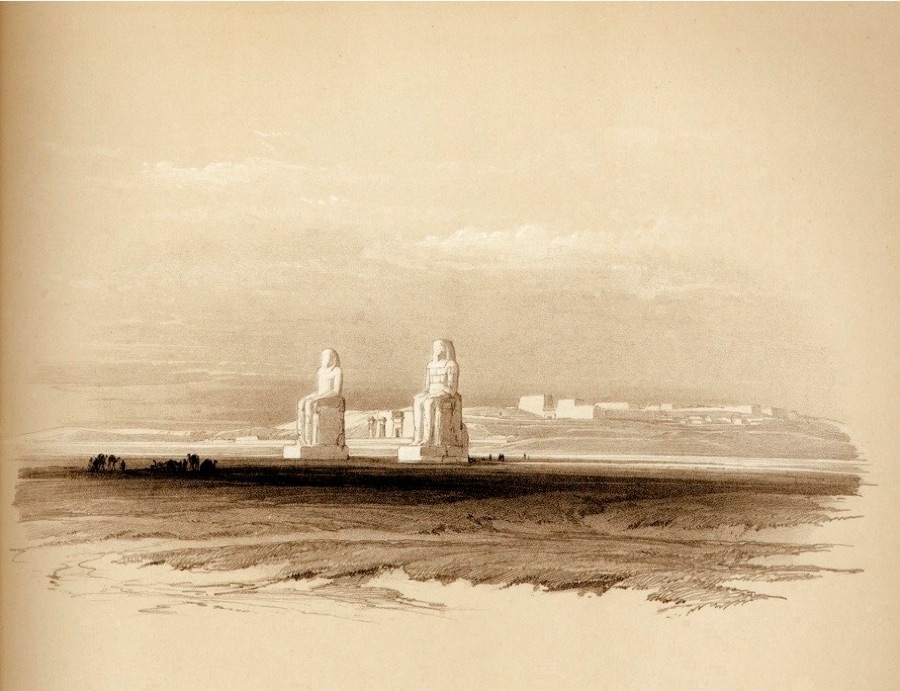STATUES OF MEMNON IN THE PLAIN OF GOORNA AT THEBES.
THE village of Goorna is situated on the western bank of the Nile, amidst a grove of palm-trees, and beyond it a plain, which exhibits at present very little cultivation, extends to some distance, and is bounded by desert hills. Amidst the extensive levels of this rough and neglected plain are seen the well-known statues of Memnon; sitting, as they have sat for ages, in grand and mournful solemnity, amidst the ruins of temples, the isolated but magnificent monuments of ancient splendour. They are called by the natives Damy and Shamy, words that sound like nicknames to us, but the natives have so such association with them. The nearest in the view is that which is known as the vocal Memnon: thanks to the newly discovered power of deciphering the hieroglyphics, it is ascertained to be the statue of Amounoph III., believed to be the Pharaoh of the Exodus, 1500 B.C. The other statue has been supposed to be that of his brother, Amun-Toonh, but without foundation, for, though he reigned for a short time jointly with Amounoph III., he was deposed by him, and excluded from the hieroglyphic lists: Amounoph was not likely, therefore, to establish his statue. It is more probable that both statues represented the same Pharaoh, as the statues of Remeses II. are repeated in the pronaos of Aboo-Simbel. The plain is bounded by lofty mountains, among which are the valleys of Bibán El Molook and other recesses, full of sepulchral excavations, whilst the lower parts of the rocky heights facing the last are occupied by the village of Goorna.


